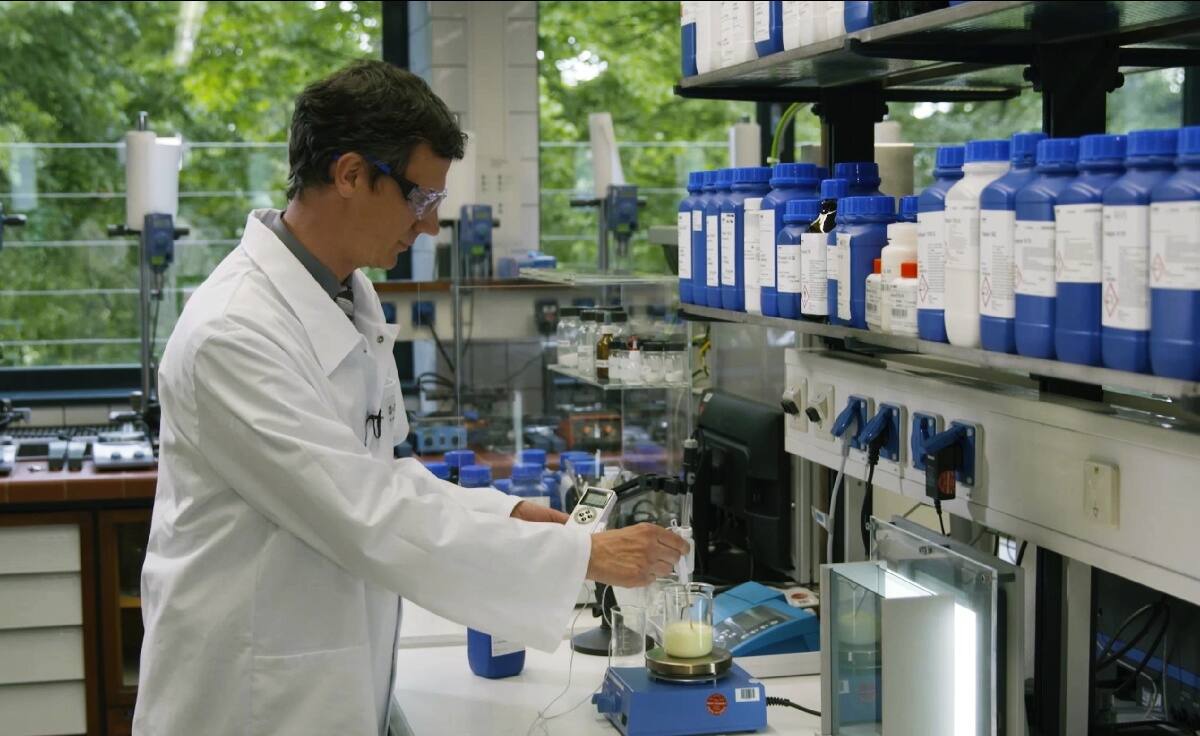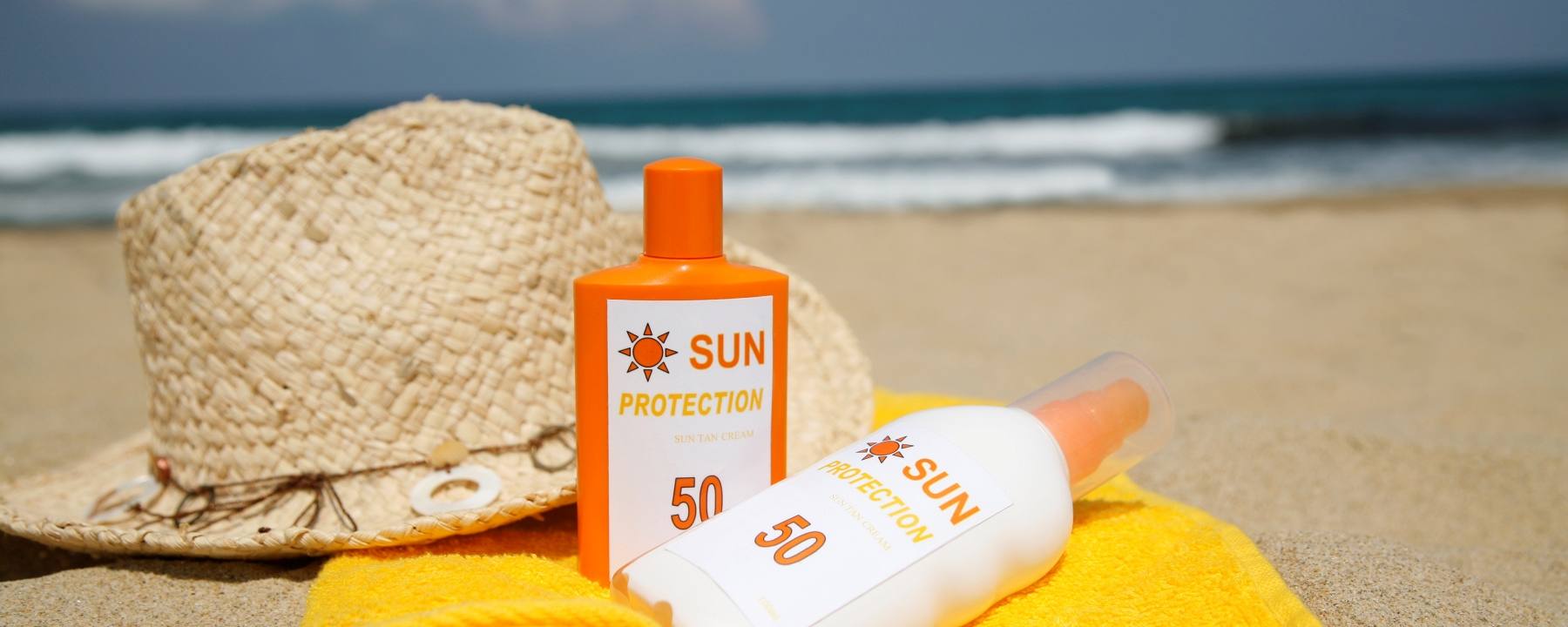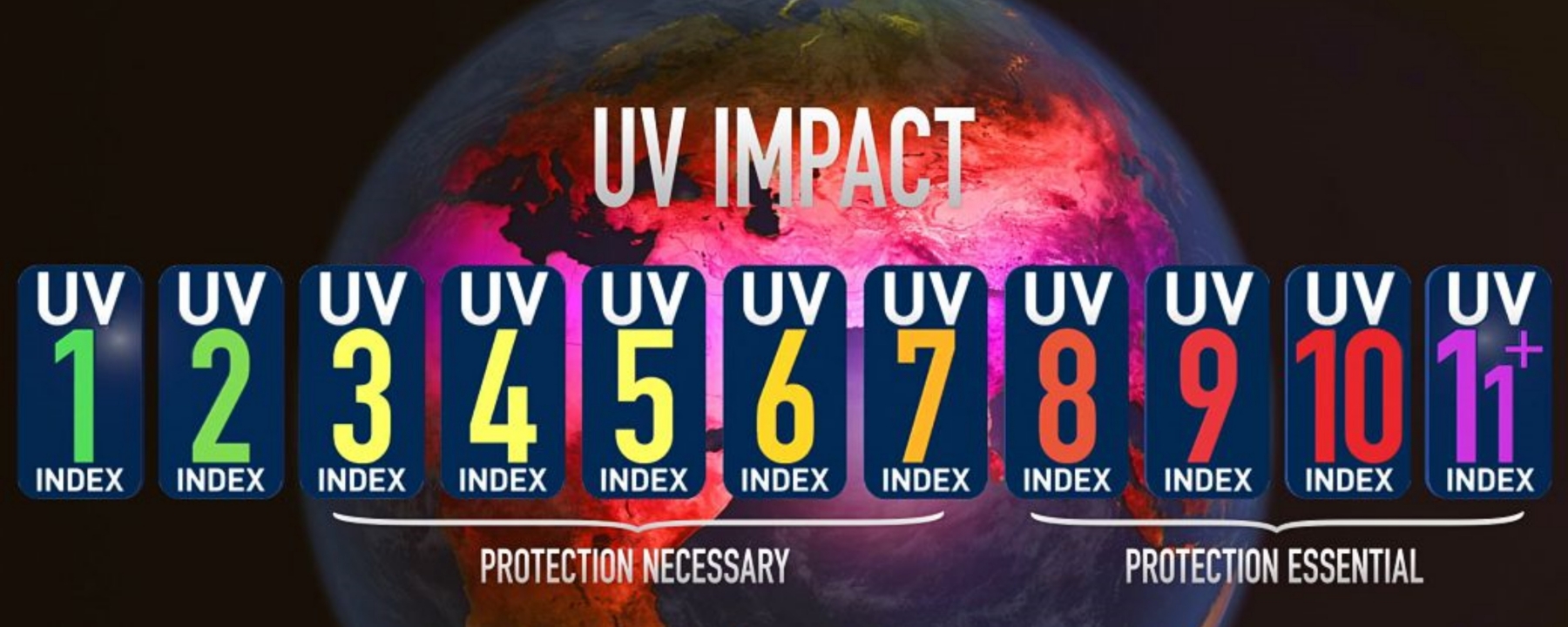
Sun protection
Sunscreen and its many inventors
Searching for the origins of something can sometimes present a challenge. A case in point: when we wanted to find out who invented sunscreen, we ended up with light bulbs. They have more in common than light alone.
A question for our online audience: Who invented the light bulb? Most of you probably came up with the name Thomas Alva Edison, right? Although Edison – admittedly a great inventor – did patent the light bulb and even improved on its design, he wasn't its inventor. There were contemporaries of Edison who beat him to it. However, finding out who actually invented the light bulb is harder than it seems.
The same goes for sunscreen: unearthing who created the first sun cream or sun protection product is no simple task. We first likely need to define exactly what kind of sun protection we mean. Does "sunscreen" include medicinal products, or only those that are commercially distributed and found on shelves in stores? Of course, in the past clothing was – and still remains – the best form of protection against UV radiation. It's not exactly relevant for today's discussion, but we didn't want to let it go unmentioned. Oh, and before we go any further:
Although we at BASF have one of the largest and best sun protection portfolios in the world – offering UV filters as well as ingredients such as emollients, emulsifiers and active agents – we don't appear on the list of inventors of sunscreen.
A long history of cosmetics
You might think that cosmetics were only invented in the last 100 years. Actually, they have been around almost just about as long as human beings have existed.
More informationFrom today’s perspective, it doesn't really matter who launched the first sunscreen on the market. It is much more important to understand that the development, refinement and continuous improvement of all kinds of sunscreen is an ongoing process. Research is being done all the time. To protect and benefit us all.
Still, even research had to start somewhere. Maybe it was thousands of years ago? Ancient Egyptians used oils and ointments for body care. They probably also combined them with natural pigments and used them to protect themselves from the sun.
We don't know with any degree of certainty to what extent people back then understood that the sun doesn't just make you feel good, but can also be damaging in various ways. They may, however, have encountered erythema.
Research has always been done
It is not a recent discovery that the sun, and light in general, have a major impact on us humans. Hippocrates (460–370 BC), discussed the effects of the sun and light on people in his treatise “On Airs, Waters and Places”.
When looking for the origin of sun protection, we inevitably end up in the age when UV radiation was discovered by Johann Wilhelm Ritter in 1801, and also when doctors began to research the effects of these types of radiation on the human body and the skin generally.
Robert Willan, an English physician and one of the founding fathers of dermatology in England, published his discoveries on the skin's sensitivity to sunlight (eczema solare) in 1789.
Meanwhile, another English physician, Everard Home, found out in 1820 that it is not the heat of the sun that is responsible for skin burns, but rather there must be another cause. In other words, the term sunburn is actually incorrect. This is all way before our time.
IN & Out in the change of time
This inevitably leads us to the significance the sun had for society. The fact is that society has changed its attitude to the sun several times over the past few centuries. It was often related to differentiating rich from poor, top from bottom.
At first it was IN to be pale. Sun-kissed skin was something only workers had. It was a sign that a person was obliged to work outdoors, toil in the fields and bear the brunt of the sun’s rays. The upper crust didn't want to look like that. Back then, no-one talked about having a healthy, sexy tan. Instead, paleness was a mark of distinction.
This was followed by a phase (in the years from 1870 onward) during which medicine started to highlight all the benefits of sunlight. Vitamin D, phototherapy and the sun's inhibitory effect on bacteria are examples of this. Sunbathing was prescribed in the interests of health. This is when research into sunscreen really began. Due to excessive stays at sanatoriums and clinics, often in the Swiss mountains, sunburn became a major issue that attracted attention – and therefore had to be resolved. After all, who wanted to endure painful changes or damage to their skin?
This was also the time when darker complexions suddenly came into fashion. It may well be the case that fashion icon Coco Chanel started the trend. We weren't around at the time, but it's a possibility. Having brown skin now became something positive.
Sports and leisure activities increasingly moved outdoors, and more people began to travel. Sunbathing was now considered chic in society. The desire to be pale faded away. The aim was to have a tanned skin but without any sunburn.
Today, we know there is no such thing as a healthy tan. Research and science never stand still, and that’s a good thing.
So what was in fact the first sunscreen? Here, too, we would probably have to agree on a definition. Do we look at it scientifically, medically or commercially through the lens of marketing and public awareness? The products most people probably think of immediately are:
- Delial, the sunscreen that conquered the German market in 1933. “Tan - yes, sunburn - no” met the needs of sun worshippers.
- Ambre Solaire saw the light of day soon after in 1936. That was also when Eugène Schueller, founder of L'Oréal, became famous worldwide.
- The history of the ox peak is also one many will be familiar with. What...ox peak? Right: that’s what Piz Buin means when translated from the Swiss Romansh language. The sunscreen's name was borrowed from a mountain. Its founder? Franz Greiter. You've almost certainly read his story before. In 1938, he became painfully sunburnt while climbing the Piz Buin mountain. This prompted his research into the topic, finally leading him to launch “his” sunscreen in 1946.
- The Swiss brand Hamol launched its Hamol Ultra product during this period, too. What’s so special about it: it's probably the only sunscreen in the world to also have its own posture: the "Hamol posture" describes the way men and women should sit in the sun.
For Nivea's 100th birthday, Beiersdorf AG took a look back at its own history. A deep dive into the Beiersdorf archives showed that in 1933, the formula for one of Nivea's oils included 0.375% of light protection. So this is where the journey of products containing active UV filters began. But remember our comments about the light bulb, because the date of release of these products was not when sunscreen was invented.
Ever heard of Antilux? Or Zeozon and Ultrazeozon? How about Milton Blake and Hamilton sunscreen from Australia? These products started providing sun protection in 1911 (Zeozon), 1922 (Antilux) and 1932 (Hamilton) and can therefore qualify as the pioneers. Sunscreen was also sold in the US from 1928. In terms of the level of light protection factor, the products of that time are a long way from today's standards. At that time, most protection products were in the range of SPF 2.
Requirements and standards are also constantly evolving
As well as the products themselves, the history of sunscreen's development also includes the changing requirements and standards these products need to meet. In the past, the range of sun protection products was fairly limited. There were some lotions, and also some thick creams to protect the skin from sunburn when on the beach or in the mountains. No-one enjoyed using these products, and they felt pretty uncomfortable on the skin. Their reputation: historically poor. More paste than lotion, they were difficult to apply evenly, were not absorbed easily, and made the user feel they were wearing a separate layer over their skin.
Today, there are many more options: creams, lotions, oils, sprays and sticks. There’s something to cater for every taste. Sun protection today is a personal preference, and can be used in a wide range of situations. A good sunscreen should naturally provide effective protection against the harmful effects of the sun’s UV rays. Overall, the requirements on cosmetic products that are many times higher.
- Delivering on the performance profile
- Well-tolerated on skin
- Pleasant texture
- Optimum sensory properties
- Stable formulation
- Pleasant smell
In the early years, sunscreen only protected you against short-wave UVB radiation. It was later discovered that experts also needed to pay more attention to the longer-wave UVA radiation. Now it is the turn of blue light to become the focus of research.
The introduction of an SPF (sun protection factor) was another important milestone. Who invented it? That's another rabbit hole. Was it Rudolf Schulze or Franz Greiter? Or had the Americans already researched it before then? No matter, this standard, since 1966 also the Stiftung Warentest evaluates by the way on the basis of the SPF, ensures consumer safety.
UVA radiation also responsible for sunburn
The sun protection factor describes how well the skin is protected from direct and visible damage caused by UV radiation, i.e. from sunburn, or erythema in medical terms. The widespread assumption that it is the SPF alone that protects us against UVB radiation is WRONG. After all, it is not only UVB rays that cause damage to the skin. Some of the UVA radiation in the intense radiation range of 320–400 nm has also been identified as a possible cause of sunburn. In fact, almost 15% of the total radiation that causes erythema (sunburn) is in this range. The SPF value is not relevant when it comes to protecting the skin against aging or cancer. Protection against UVA rays needs to be the focus here.
While sun protection was “only” made for humans in its first few decades, sustainability is now a key element in the equation, with prevention of environmental damage also playing a major role in the development and evaluation of sunscreens.
Science has traveled a long and instructive path from Hippocrates to the present day, with fact-based insights and results. From mild skin redness and sunburn to premature skin aging and the formation of cancerous skin cells, we have plenty of reasons to protect ourselves extensively and comprehensively against UV rays. The requirements placed on UV filters have risen continuously in recent years, which has triggered a development process that is still advancing.
Sun protection – relevant 365 days a year since ancient times. Always within reach. Not just during the holiday season. And now having pale skin is back IN fashion. This is a good trend in terms of health, because there is no such thing as a healthy tan.
Weitere interessante Informationen zum Thema Sonnenschutz:






